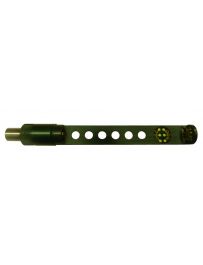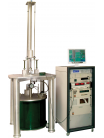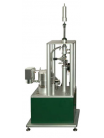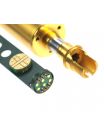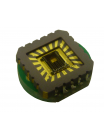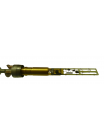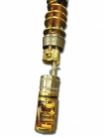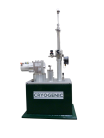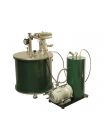Specific Heat Capacity
The heat capacity probe uses a miniature AC calorimeter to measure the heat capacity of samples weighing as little as one microgram. The AC technique employed is highly sensitivity and combined with the automated Cryogenic Software, is simple to use.
The sample is mounted on to a calorimeter membrane using thermally conductive vacuum grease and placed on a standard Cryogenic sample probe. The probe is inserted into the VTI through an airlock into low pressure exchange gas.
The temperature control, thermometer calibration, pulse settings, data analysis and error checking are automatically performed in the custom written software.
Key Features
• Low amplitude of temperature oscillations giving excellent temperature resolution (typically 0.1K at 50K). This makes the technique ideally suited to investigations of narrow phase transitions.
• Fast measurement. The frequency of the temperature modulation is of the order of 100 to 10 Hz so the effective time constant is in the range 0.1 to 1 seconds. This allows the heat capacity to be recorded as a function of continuously varying external parameters (temperature or field), through a phase transition.
• High sensitivity. The sensitive element is manufactured using silicon-nitride membrane technology and sensors are calibrated over the entire range of temperature and magnetic fields of interest. The high sensitivity, around 1 nJ/K, allows studies of the small single crystals typical of novel materials.
• Robustness and durability. The membranes are strong and robust. With reasonable care the lifetime of a single sensor can span over tens of sample replacements. The system is offered with several spare sample cells; additional cells are readily available at reasonable cost.
• Sample size. Ideally the lateral sample size should match the size of the miniature heater patterned on the membrane, which is approximately 100 x 200 microns. Using larger samples may reduce accuracy, although the qualitative features of the heat capacity will be resolved correctly.




